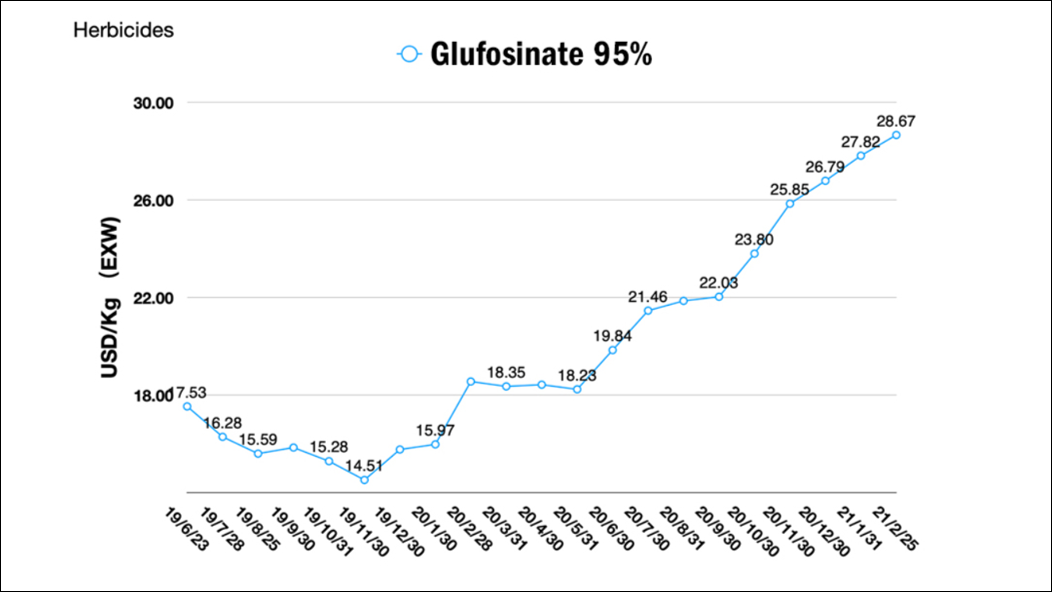Crop Protection Product Shortages:
In August 2020, the Agri-Food WatchDesk advised Aimpoint Research® Executive Intelligence Network members to pay close attention to agri-chemical supply chains due to several global signals the team was tracking, including countries reducing the use of glyphosate and paraquat, the ban of 2-4D manufacturing in India (third largest global manufacturer), flooding in China (number one global manufacturer), and ongoing supply chain stress related to Covid-19.
Unfortunately, supply chain challenges for critical on-farm products have become reality with a short supply of glufosinate, glyphosate and other crop protection products right at the start of planting season across most of the U.S. Prices are increasing and some farmers may have to source alternative products.

“In addition to global signals, we also knew that 2021 was expected to be a big year for glufosinate in the U.S. market since all the major soybean traits, including Enlist E3, XtendFlex and LibertyLink GT27, are tolerant to glufosinate,” said Jenna Lansing, Aimpoint Research Agri-Food WatchDesk Manager. “The entire global system is in an adjustment period as it tries to find its new supply and demand equilibrium. Additionally, agriculture supplies are battling with other consumer goods at ports to catch up so this is not something that will be resolved quickly.”
“It’s a perfect storm and it’s going to be with us for a while,” said Gregg Doud, Aimpoint Research Vice President of Global Situational Awareness & Chief Economist. “Soybean acres are up. Commodity prices are up and were already expected to be on a roller coaster through the summer. Now we add in a short supply and rising prices of inputs. Hang on, it’s going to be a wild ride as our supply chain adjusts.”
In late 2020 and early 2021, Aimpoint Research partnered with the National Council of Farm Cooperatives to conduct a Pandemic After-Action Review & Resiliency Planning exercise that examined remaining vulnerabilities in the agri-food value chain. The lack of diversity in supply chains for critical agricultural products was one of the top vulnerabilities identified by participants.
“Supply chain redundancy and diversity is critical and we’re seeing this scenario play out in real time,” said Doud.
What now?
“There are always ripple effects,” said Lansing. “Our team is digging into potential repercussions that could extend and cause disruptions in places you might not expect.”
To gain access to monthly reports on all trends, innovations, opportunities, and disruptions occurring in the agri-food value chain, contact Aimpoint Research to join the Executive Intelligence Network.